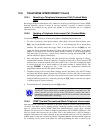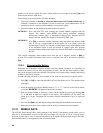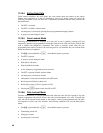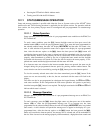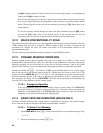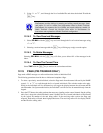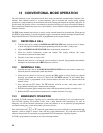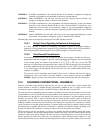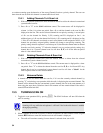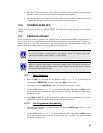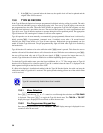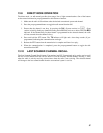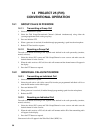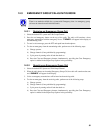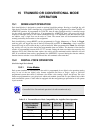
53
METHOD 1:
G-STAR is transmitted on the selected channel. If the channel is changed the emergency
signaling will continue to be transmitted on the newly selected channel.
METHOD 2:
Same as METHOD 1 but the radio will lock on to the currently selected channel. Any
attempts to change the system or channel will be disabled.
METHOD 3:
G-STAR is transmitted on a pre-
p
rogrammed conventional emergency system and channel
regardless of the selected channel. In this case the selected channel is available for voice
transmission and the radio will periodically change to the pre-
p
rogrammed emergency
system and channel to send the emergency signaling and then change back to the selected
channel.
METHOD 4:
Same as METHOD 3 but the radio will lock on to the pre-
p
rogrammed emergency syste
m
and channel. Any attempts to change the system or channel will be disabled.
The emergency state can be cleared by turning the radio OFF and then back ON.
13.3.1 Using 5-Tone Signaling to Declare an Emergency
If 5-Tone signaling is defined for emergency declaration in place of G-STAR emergency
signaling, a pre-programmed tone sequence will be transmitted instead of the G-STAR sequence.
This emergency declaration functions as the G-STAR emergency in all other respects.
13.3.2 Tone Encode Transmission
In conventional mode two keys can be defined to be tone encode triggers. If either one of the pre-
programmed tone encode triggers is pressed, a pre-programmed tone sequence will be transmitted
on the current system and channel. (See Section 13.3 if E or “
E” key is used.) The TX
indicator will light during tone transmission and a beep will sound at the end of the transmission.
If enabled, audible side tones will be heard in the radio speaker as well. If PTT is pre-programmed
as one of the triggers, the microphone will become active for voice communication after the tone
sequence is complete.
Tone encode will be transmitted with Channel Guard if one is defined, and tones are always
transmitted in clear voice mode, even if the channel is set for digital or private (see VOICE
MODES). Digital or private voice transmission will resume normally after the tone transmission.
13.4 SCANNING CONVENTIONAL CHANNELS
Channels, which have been previously added to the scan list on a per system basis, can be scanned. The
selected channel is scanned (if enabled through programming) whether or not it is in the scan list. Each
conventional system's channel scan list is retained in memory when the radio is turned OFF.
The scan rate will vary depending upon the number of channels in the scan list and whether or not the radio
is programmed to scan for channels with decoding enabled. Fewer channels will result in a faster scan rate.
If programmed for dual-priority scan operation, the priority-one, priority-two and the remaining scan list
channels are scanned. Once a signal is detected and the correct encoded squelch signal is decoded (if
programmed), the radio receives the message and displays the received scan channel. At the same time,
scanning continues on the priority-one and priority-two channels. If a priority-one or priority-two channel
carrier, regardless of encoded squelch decoding, is detected while a non-priority channel is being received,
the display name is updated and the received channel is switched to the priority channel. Scanning of the
priority-one channel will continue if a message is being received on the priority-two channel.
While receiving a call on a non-priority or a priority two channel, the radio periodically checks the priority
one and two channels. If Scan with Channel Guard is enabled, the radio will use Channel Guard to decide
whether to unmute on a priority channel. The radio will stop, on squelch detection, on a priority channel. In
normal operation, the radio will unmute only on detecting the correct Channel Guard; otherwise, it will
remain muted until the priority channel call and hang time have ended. An optional feature allows the radio



